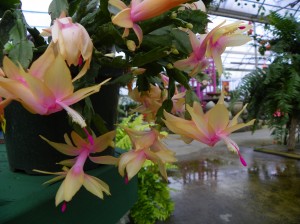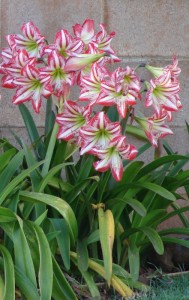Care of Holiday Plants
go.ncsu.edu/readext?436888
en Español / em Português
El inglés es el idioma de control de esta página. En la medida en que haya algún conflicto entre la traducción al inglés y la traducción, el inglés prevalece.
Al hacer clic en el enlace de traducción se activa un servicio de traducción gratuito para convertir la página al español. Al igual que con cualquier traducción por Internet, la conversión no es sensible al contexto y puede que no traduzca el texto en su significado original. NC State Extension no garantiza la exactitud del texto traducido. Por favor, tenga en cuenta que algunas aplicaciones y/o servicios pueden no funcionar como se espera cuando se traducen.
Português
Inglês é o idioma de controle desta página. Na medida que haja algum conflito entre o texto original em Inglês e a tradução, o Inglês prevalece.
Ao clicar no link de tradução, um serviço gratuito de tradução será ativado para converter a página para o Português. Como em qualquer tradução pela internet, a conversão não é sensivel ao contexto e pode não ocorrer a tradução para o significado orginal. O serviço de Extensão da Carolina do Norte (NC State Extension) não garante a exatidão do texto traduzido. Por favor, observe que algumas funções ou serviços podem não funcionar como esperado após a tradução.
English
English is the controlling language of this page. To the extent there is any conflict between the English text and the translation, English controls.
Clicking on the translation link activates a free translation service to convert the page to Spanish. As with any Internet translation, the conversion is not context-sensitive and may not translate the text to its original meaning. NC State Extension does not guarantee the accuracy of the translated text. Please note that some applications and/or services may not function as expected when translated.
Collapse ▲While the Christmas tree may be the plant most commonly associated with the holidays, flowers like poinsettias, Christmas cactus, and amaryllis are an equally important part of the Christmas tradition and are widely available from garden centers this time of the year. The following tips will help you get the most Christmas cheer out of these favorite holiday plants.
Start with Healthy Plants
The easiest way to keep any plant healthy is to buy a healthy plant to begin with. When picking out poinsettias, look for plants that have lots of dark green foliage from top to bottom. Plants that have yellowing lower leaves will not last as long as those whose lower leaves are still dark green.
To get the most out of a Christmas cactus, purchase plants that have a healthy green color and lots of unopened flowers. Plants purchased that are already in full bloom will not flower as long once you get them home.
Amaryllis are usually purchased as bulbs rather than growing plants. When purchasing amaryllis bulbs make sure to choose large, firm bulbs free of cuts or bruises. Bulb size is important because the flowers the plant will produce are already inside the bulb. Larger bulbs will have bigger flowers and will produce more flowering stalks.
Care: Watering Is Key
Indoors, amaryllis, poinsettias, and Christmas cactus will grow best in a brightly lit, warm (60 to 75 degree) area away from cold drafts. Keeping these plants evenly moist, but not overwatered, is the real key to success. Like most houseplants, poinsettia, amaryllis, and Christmas cactus especially resent staying wet and will rot if kept continuously soggy. The most accurate way to tell if a potted plant needs to be watered is to check the potting soil. When the soil feels dry and the containers feel light when lifted, it is time to water.
The best way to water houseplants is in the sink. Be sure to remove potted plants from decorative cachepots or foil wrappers before watering. Add water until it begins to drain out of the bottom of the pot and then allow the plant to drain for a few minutes before returning it to its normal location. When watering plants in containers that have saucers underneath be sure to pour out any excess water the saucer captures after each watering.
Room temperature water is best for watering houseplants. Rain water collected in a rain barrel or well water are ideal since they are less likely to contain additives that may injure sensitive plants. If you are using tap water that has been fluoridated, fill your watering can but then allow it to sit for several hours or overnight before using to allow the fluoride to dissipate. Do not use water treated by a water softener. Softened water contains sodium which can accumulate in potting soil and burn plant roots.
Care After the Holidays
The level of care you give these plants after the holidays will depend on how long you intend to keep them. While it is possible to keep poinsettias alive from one year to the next, for many of us the most realistic thing to do with a poinsettia after it starts to look bad is add it to the compost pile. Christmas cactus and amaryllis are easier to care for and more likely to bring long term success.
After your Christmas cactus finishes blooming, pinch a few leaf segments off the end of each branch to keep plants full and bushy. You can easily root new plants from these pieces by sticking them in potting soil. As days get longer and temperatures warmer, add a pelleted slow release fertilizer to the soil or fertilize plants twice a month with a water soluble fertilizer or compost tea. In spring, plants can be moved outdoors to a partly shaded site after all threat of frost has passed – just remember to bring them back indoors in October.
Amaryllis are hardy when grown outside in southeastern North Carolina and bulbs forced for Christmas can be transplanted into the landscape in spring where they will continue to grow and bloom for years to come. As a landscape plant, amaryllis are easy to grow, deer and vole resistant, and are adaptable to many sites, though they grow best in a sunny to partly shaded site with well-drained soil. When planted outdoors, amaryllis will return to their normal blooming cycle and will flower in the spring rather than winter.
Learn More!
For more details on caring for poinsettia, Christmas cactus, and amaryllis, see these North Carolina Cooperative Extension articles:
- Poinsettia: https://poinsettias.ces.ncsu.edu/2019/01/how-to-care-for-your-poinsettia-beyond-the-holidays/
- Christmas Cactus: https://plants.ces.ncsu.edu/plants/schlumbergera-truncata/
- Amaryllis: https: https://plants.ces.ncsu.edu/plants/hippeastrum/
Visit your local Cooperative Extension office to learn more about gardening and landscape care. Go to https://www.ces.ncsu.edu/local-county-center/ to find your county Extension center.





